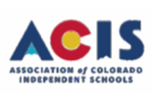 This morning the Space Exploration ECS group officially launched its first model rockets. The launch was originally scheduled for the first day of the ECS but we were forced to postpone due to a Red Flag Warning in Colorado Springs. The warning is named after the symbol that indicates a small craft ban due to wind. Our launch took place at Boddington Field at approximately 8:00 a.m. Each Viking rocket was equipped with an altimeter so that groups could record the peak height reached (called apogee) by the rocket. On Monday, we had learned to calculate apogee manually by using an altitrack.
This morning the Space Exploration ECS group officially launched its first model rockets. The launch was originally scheduled for the first day of the ECS but we were forced to postpone due to a Red Flag Warning in Colorado Springs. The warning is named after the symbol that indicates a small craft ban due to wind. Our launch took place at Boddington Field at approximately 8:00 a.m. Each Viking rocket was equipped with an altimeter so that groups could record the peak height reached (called apogee) by the rocket. On Monday, we had learned to calculate apogee manually by using an altitrack.
We faced many problems during the launch process. The very first rocket that was set to launch encountered a motor failure, so the suspense of the initial launch of our ECS was quickly subdued. It was a very windy morning, which was another difficult obstacle for us to overcome. The wind caused pushed our rockets to the north end of Boddington and caused two rockets to land in tree branches way out of our reach, so we could not recover all of our electronic devices. We addressed the wind by setting the angle of the launch pad differently, but due to our inexperience we did not think about the correct way to account for the angle when measuring apogee with our altitrack, so most of our data was inconclusive. Although we ended up with these problems and a bad start, however, we did end up learning many important basic knowledges for rocketry. First, we learned how to deal with a windy day like today. Secondly, we learned how to read data from an altimeter. Thirdly, we learned the importance about the shape and numbers of fins on a rocket.
At then meet with Jim Langsted from Edge of Space Sciences, and he taught us about high altitude balloons and the process we will follow to create a payload that we will use for our own balloon launch on Saturday, March 18. Afterwards, we travelled to The Space Foundation to meet with Elias Molen who explained further into the history of missiles and rockets. Mr. Molen introduced us to a project that involved making straw rockets, and we faced the challenge of head-to-head competition related to designing the best rocket. We are still working out the best configuration of fins, weight and launch angle. It was mainly a rinse and repeat system that took a while to find the sought-after results. However, we were able to make significant improvement on our original rockets by looking at what worked best between our own build and the ideas of others.
Follow all the student ECS Blogs on Campus News!



